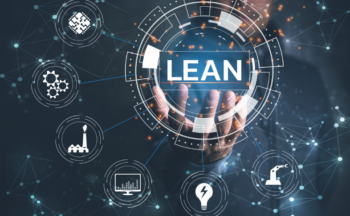I’ve been busy lately, diving into the intricacies of our Quality Management System (QMS) policies and procedures here at Way We Do to ensure we’re offering the best SOP software solutions to our clients. To sharpen our edge and make our software platform even better, I’ve included a PESTLE Analysis in our “QMS Context, Requirements, and Scope” document. Why, you ask? Because PESTLE Analysis offers us one of several solid risk management approaches, making sure we’re not just responsive but proactive in our ever-evolving business landscape. Now, let’s delve into what PESTLE Analysis is, how you can use it, and look at some real-world examples.
What is PESTLE Analysis?
PESTLE Analysis is a strategic tool used to identify and analyze the key external factors that could impact an organization. These factors are generally beyond the control of the company but can affect its performance, profitability, and long-term sustainability.
The Components
- Political: Government policies, regulations, political stability, etc.
- Economic: Economic indicators, market trends, exchange rates, etc.
- Social: Demographics, cultural norms, lifestyle attitudes, etc.
- Technological: Innovations, automation, R&D, etc.
- Legal: Laws, legal constraints, regulatory standards, etc.
- Environmental: Climate change, sustainability, environmental regulations, etc.
Why is PESTLE Analysis Important?
- Risk Mitigation: Helps identify potential risks in a business strategy.
- Strategic Alignment: Assists in aligning the organizational objectives with the macro-environment.
- Competitive Advantage: Enables a business to identify opportunities that it can leverage.
How to Conduct a PESTLE Analysis?
- Identify the Factors: Start by making a list of factors under each category.
- Gather Data: Collect relevant information through market research, reports, and other sources.
- Analyze: Evaluate the impact of each factor on your business.
- Draw Conclusions: Summarize the findings and make informed decisions.
6 Real-world Examples
Starbucks

- Political: Trade policies can impact the sourcing of coffee beans, affecting the cost and quality.
- Economic: Economic downturns can lead to reduced consumer spending, affecting sales.
- Social: Consumer attitudes towards sustainable sourcing can shape brand reputation.
- Technological: The use of mobile apps for orders and payments can enhance customer experience.
- Legal: Regulations on single-use plastics can influence the choice of packaging.
- Environmental: Climate change could affect the regions where coffee beans are grown, impacting supply.
Tesla

- Political: Subsidies for electric vehicles can encourage consumer adoption.
- Economic: Fluctuations in oil prices can either drive or inhibit electric vehicle adoption.
- Social: Growing awareness of climate change boosts consumer interest in electric vehicles.
- Technological: Advancements in battery technology can significantly impact the driving range.
- Legal: Emission norms could force companies to develop more eco-friendly cars.
- Environmental: The sustainability of sourcing materials for batteries could become a significant concern.
Apple Inc.

- Political: Trade tensions between the U.S. and China could impact the supply chain, as many of Apple’s products are manufactured in China.
- Economic: Exchange rates affect Apple’s international sales, and economic downturns could lead to a reduction in consumer spending on luxury items like high-end smartphones.
- Social: The shift toward remote work and online education boosts the demand for laptops and tablets, directly benefiting Apple.
- Technological: Rapid technological changes mean Apple must continually innovate to maintain a competitive edge, focusing on R&D for everything from device capabilities to user privacy features.
- Legal: Intellectual property laws are crucial for protecting Apple’s proprietary designs and technology.
- Environmental: As consumers become more environmentally conscious, Apple’s initiatives toward using renewable energy and reducing waste become increasingly important for its brand image.
Airbnb

- Political: Policies and regulations on short-term rentals vary from city to city, directly affecting Airbnb’s operations. For example, some cities have strict licensing requirements for hosts.
- Economic: Economic conditions like unemployment rates or tourism trends can significantly impact bookings. Economic downturns can lead to reduced travel and thus lower bookings.
- Social: Changing consumer preferences toward “experiential travel” over traditional hotel stays work in Airbnb’s favor. However, public sentiment regarding the impact of short-term rentals on housing availability is a concern.
- Technological: Digital literacy and internet accessibility are crucial for Airbnb’s user base, both for hosts and travelers. Additionally, technological solutions for secure and seamless transactions are vital.
- Legal: Issues like tenant rights, zoning laws, and safety regulations can pose challenges. Airbnb must navigate a complex legal landscape to operate efficiently.
- Environmental: As travel resumes post-pandemic, a focus on sustainable travel practices could be an opportunity for Airbnb to differentiate itself. The company could promote eco-friendly homes or experiences, for instance.
Netflix

- Political: Internet freedom and data regulations play a significant role in Netflix’s ability to offer its services globally.
- Economic: Currency fluctuations can affect subscription rates and the affordability of Netflix in different countries.
- Social: Cultural nuances dictate the type of content that becomes popular in various markets.
- Technological: Innovations in streaming tech and data analytics help Netflix maintain its competitive edge.
- Legal: Copyright laws are an ongoing concern, especially with the diversification of content.
- Environmental: Though primarily digital, Netflix’s energy-intensive data centers have environmental impacts.
Coca-Cola

- Political: Trade tariffs can have a massive effect on Coca-Cola’s cost structure, given its global supply chain.
- Economic: Economic cycles influence how much disposable income people have to spend on non-essentials like soft drinks.
- Social: Health trends can either boost or damage sales—think Coca-Cola Zero versus Classic Coca-Cola.
- Technological: Automation in production facilities can drive down costs and increase efficiency.
- Legal: Regulations around sugar content and labeling have direct implications for Coca-Cola’s product line.
- Environmental: Sustainability is a concern; hence, the shift towards more responsible packaging options.
PESTLE — an invaluable tool
PESTLE Analysis isn’t just for a select few; it’s a universally useful tool for businesses of all kinds. From SOP Software solutions at Way We Do to streaming services like Netflix and beverage giants like Coca-Cola, the utility of PESTLE Analysis in understanding external factors and potential risks is evident.
So, how do you plan on using PESTLE Analysis in your business? Whether it’s to gain a competitive edge, mitigate risks, or carve a niche, the floor is yours to strategize. We’re all ears!




